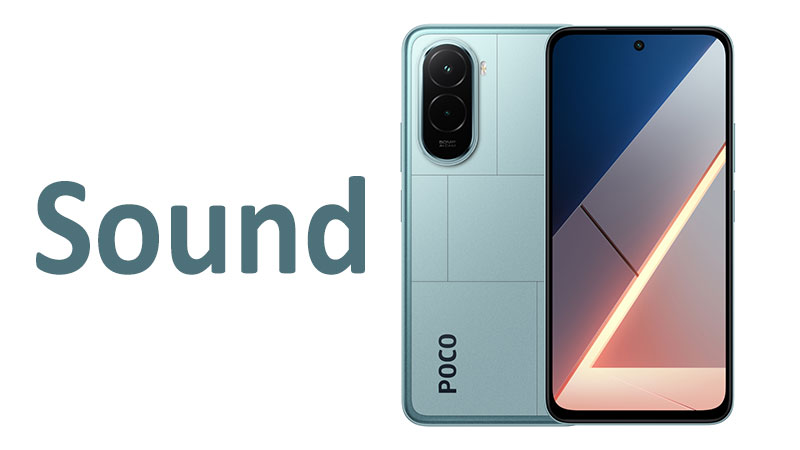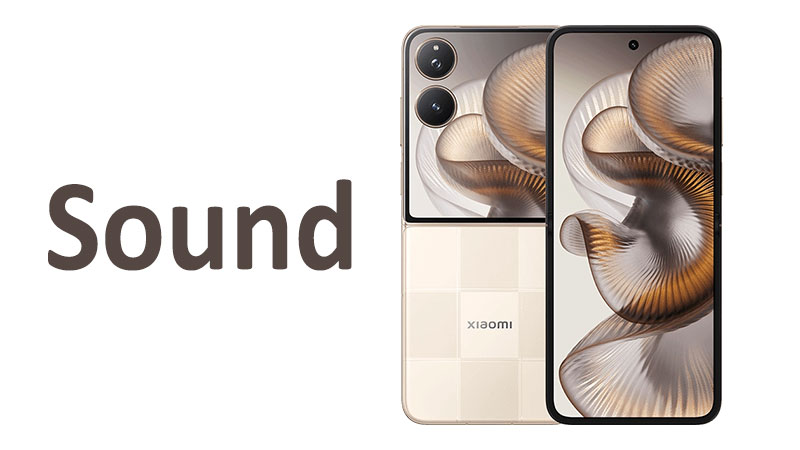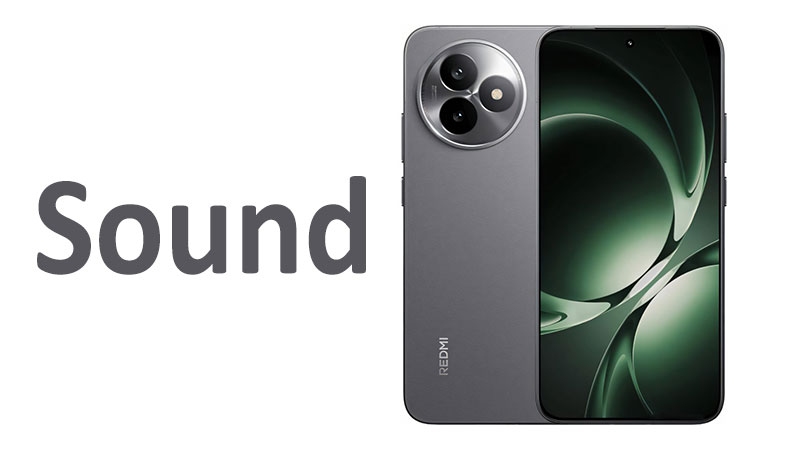In the world of budget and mid-range smartphones, the Xiaomi Poco series has carved out a significant niche. These devices are known for offering powerful performance and competitive features at an accessible price. However, one area that often gets overlooked in initial reviews is the audio experience. The Xiaomi Poco M7 Plus sound quality is a crucial factor for many users. Whether you are a music enthusiast, a mobile gamer, or someone who relies on their phone for video calls and media consumption, the speakers and audio quality of the Poco M7 Plus can significantly impact your daily use. This comprehensive article delves deep into every facet of the audio experience, from the hardware specifications to real-world performance. We will explore the strengths and weaknesses of the Poco M7 Plus’s sound capabilities, providing an in-depth analysis for potential buyers.
Speakers: Mono vs. Stereo and Volume
The first thing to address regarding the Xiaomi Poco M7 Plus speakers is the hardware configuration. Unlike some of its competitors or even previous models in the Poco lineup, the Poco M7 Plus is equipped with a single, downward-firing mono speaker. This is a notable point for anyone considering the device. While a single speaker can be loud, it lacks the immersive, spatial sound that a stereo setup provides. This is a significant trade-off for a phone focused on a large, cinematic display and a high refresh rate.
In terms of loudness, the Poco M7 Plus performs commendably. The mono speaker can get quite loud, which is useful for listening to music or podcasts in a noisy environment. According to some reports, Xiaomi has implemented a “200% volume boost” feature, a claim that is likely a software enhancement to push the speaker’s output to its maximum. While this does result in a very high volume, it can sometimes introduce distortion at the highest levels. For a phone that is marketed as a multimedia powerhouse, the absence of stereo speakers is a clear disadvantage.
Audio Quality: Clarity and Performance
Beyond volume, the quality of the audio is paramount. The Poco M7 Plus’s mono speaker, despite its loudness, delivers a sound profile that is functional but not exceptional. The audio is clear at moderate volumes, making it suitable for watching YouTube videos or casual media consumption. However, the sound lacks depth and richness. The bass is largely absent, and the mids can sound a bit thin. The highs are decent but can become harsh and tinny when the volume is cranked up.
For a general audience, the sound quality is acceptable. It gets the job done for everyday tasks like taking phone calls on speakerphone or listening to a quick clip. For a more discerning user, such as someone who listens to music without headphones, this single speaker will be a noticeable downgrade from devices with stereo sound. The lack of stereo separation means that the soundstage is non-existent, and the audio feels flat. This is a significant point to consider, especially for gamers who rely on directional audio cues.
The 3.5mm Headphone Jack: A Disappointing Omission
One of the most surprising and perhaps most disappointing aspects of the Poco M7 Plus’s audio features is the complete removal of the 3.5mm headphone jack. This is a departure from many of its predecessors in the budget-friendly M-series, which have historically retained this feature. For many users, particularly those who prefer the reliability of wired audio or already own high-quality wired headphones, this is a major drawback.
The industry trend of removing the headphone jack is often justified by a desire for a slimmer design or enhanced water resistance. In the case of the Poco M7 Plus, which is already quite a large device with an IP64 rating for dust and splash resistance, this decision feels like a calculated downgrade. Users are now forced to rely on USB-C headphones or wireless Bluetooth audio. This adds an extra cost and a potential point of failure for many people who are accustomed to simple, plug-and-play wired audio.
Bluetooth and Wireless Audio: The Primary Alternative
With the headphone jack gone, Bluetooth becomes the primary method for private audio listening. The Poco M7 Plus supports Bluetooth 5.1. This is a modern standard that provides a stable connection, good range, and energy efficiency. It is compatible with a wide range of Bluetooth headphones, earbuds, and speakers.
The quality of Bluetooth audio depends heavily on the codec support. While the Poco M7 Plus supports standard codecs like SBC and AAC, the lack of information on high-fidelity codecs like aptX, aptX HD, or LDAC is a concern for audiophiles. Without these advanced codecs, the quality of streaming music can be limited, even when paired with high-end wireless headphones. For the average user, the Bluetooth performance will be perfectly adequate for a standard pair of wireless earbuds. However, those seeking a truly lossless or high-resolution wireless audio experience may be disappointed.
Microphone Quality: Clear Communication
An often-overlooked aspect of a phone’s audio capabilities is its microphone. The microphone on the Poco M7 Plus performs well for its class. In standard phone calls and video conferences, the voice pickup is clear, and background noise is adequately suppressed. For content creators or those who frequently record voice notes, the microphone is reliable for capturing clear audio.
While it won’t replace a professional-grade external microphone, it is more than sufficient for everyday use. The clarity is a definite plus for anyone who uses their phone for business calls or frequent communication. This is one area where the Xiaomi Poco M7 Plus sound experience meets expectations without any significant compromises.
Specialized Comparisons and Analysis
Poco M7 Plus vs. Poco M6 Pro:
The Poco M6 Pro was a well-received device, and its audio features were a key part of its appeal. The M6 Pro featured stereo speakers and, crucially, a 3.5mm headphone jack. It also supported Dolby Atmos, a significant software enhancement that improved the overall soundstage and quality. In a head-to-head comparison, the Poco M7 Plus falls short in almost every aspect of audio. The shift to a mono speaker and the removal of the headphone jack are clear regressions. While the M7 Plus offers improvements in other areas like battery and display, the audio downgrade is undeniable.
Poco M7 Plus vs. Competitors:
Many competing smartphones in the same price segment offer better audio. Devices from brands like Samsung, Motorola, and even other Xiaomi sub-brands often feature stereo speakers. Some even retain the 3.5mm headphone jack. This places the Poco M7 Plus at a distinct disadvantage for users who prioritize media consumption and audio quality. The trade-offs made in the audio department are a significant point of differentiation and a potential deal-breaker for some.
Pros and Cons of Xiaomi Poco M7 Plus Sound
Pros:
- Loud Speaker: The mono speaker can achieve a very high volume, which is great for alerts and loud environments.
- Clear Microphone: Voice quality for calls and recordings is clear and reliable.
- Modern Bluetooth: Bluetooth 5.1 provides a stable wireless connection.
Cons:
- Mono Speaker: The lack of stereo speakers results in a flat and non-immersive sound experience.
- No 3.5mm Headphone Jack: A major regression that forces users to rely on adapters or wireless audio.
- Lack of Depth: The audio quality from the speaker is thin, with poor bass response and sometimes harsh highs.
- No Dolby Atmos: The absence of software enhancements like Dolby Atmos means the audio lacks the richness found in other devices.
Important Points for Buyers
For a prospective buyer, understanding these audio characteristics is crucial. The Poco M7 Plus is not an audio-centric smartphone. Its strengths lie in other areas: a massive battery, a large and smooth display, and a capable processor. The audio experience is functional and adequate for basic use but will not satisfy those who value high-quality sound.
If you are a gamer, a movie lover, or a music aficionado who often uses a phone’s built-in speakers, you should be prepared to invest in a good pair of wireless headphones or a USB-C adapter. The decision to remove the headphone jack is a significant shift for the Poco M-series, and it’s a trade-off that buyers must be aware of before making a purchase. The phone’s audio capabilities are clearly a secondary consideration in its design, prioritizing other features instead.
Conclusion
The Xiaomi Poco M7 Plus is a compelling device in its price category, excelling in areas like battery life, display technology, and overall performance. However, when it comes to Xiaomi Poco M7 Plus sound, the story is one of significant compromise. The decision to include a single mono speaker and, more importantly, to remove the 3.5mm headphone jack, places this phone at a disadvantage compared to its predecessors and many of its competitors.
While the loud speaker and clear microphone are redeeming qualities, the overall lack of stereo separation, depth, and the forced reliance on wireless or USB-C audio solutions make this phone a poor choice for audio-centric users. The Poco M7 Plus is a testament to the brand’s focus on delivering core performance features, but it does so at the expense of a rich and immersive audio experience. For the average user who primarily uses headphones, this may not be a deal-breaker. However, for those who value speaker quality and the convenience of a headphone jack, this is a major consideration that should influence their buying decision.
FAQ
No, the Xiaomi Poco M7 Plus does not have a 3.5mm headphone jack. You will need to use USB-C or Bluetooth headphones.
No, the Poco M7 Plus is equipped with a single, downward-firing mono speaker.
Yes, the speaker on the Poco M7 Plus is very loud, which is suitable for watching videos or listening to music in a noisy environment.
No, there is no official mention or support for Dolby Atmos on the Poco M7 Plus.
The microphone quality is good, providing clear voice pickup and adequate background noise suppression for standard phone calls and video conferences.



